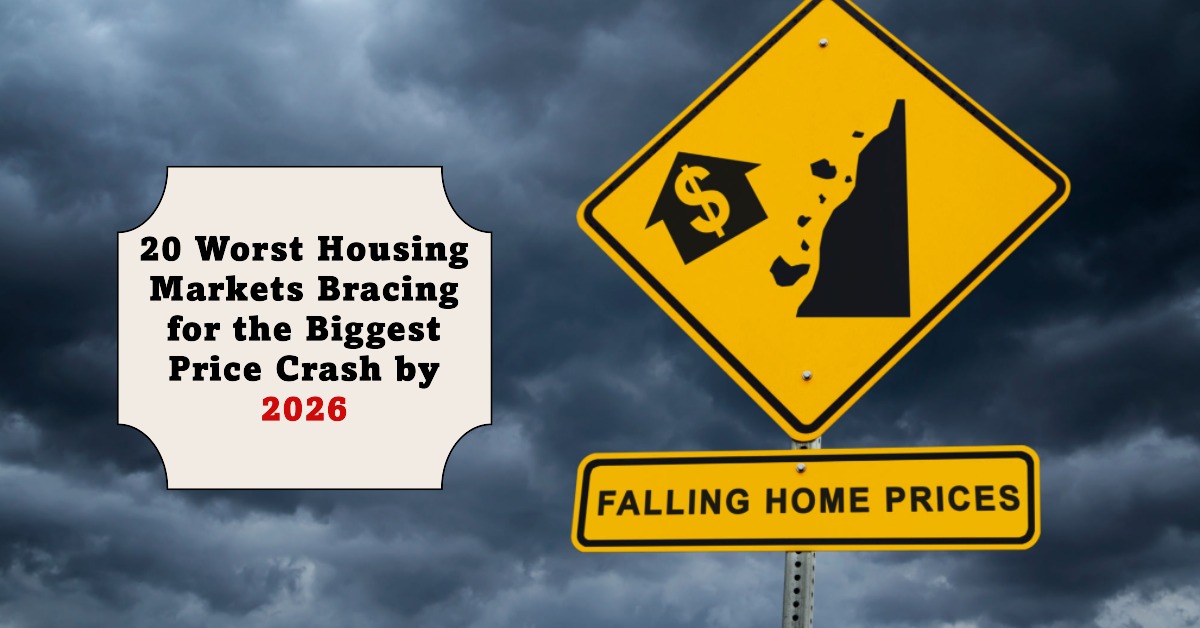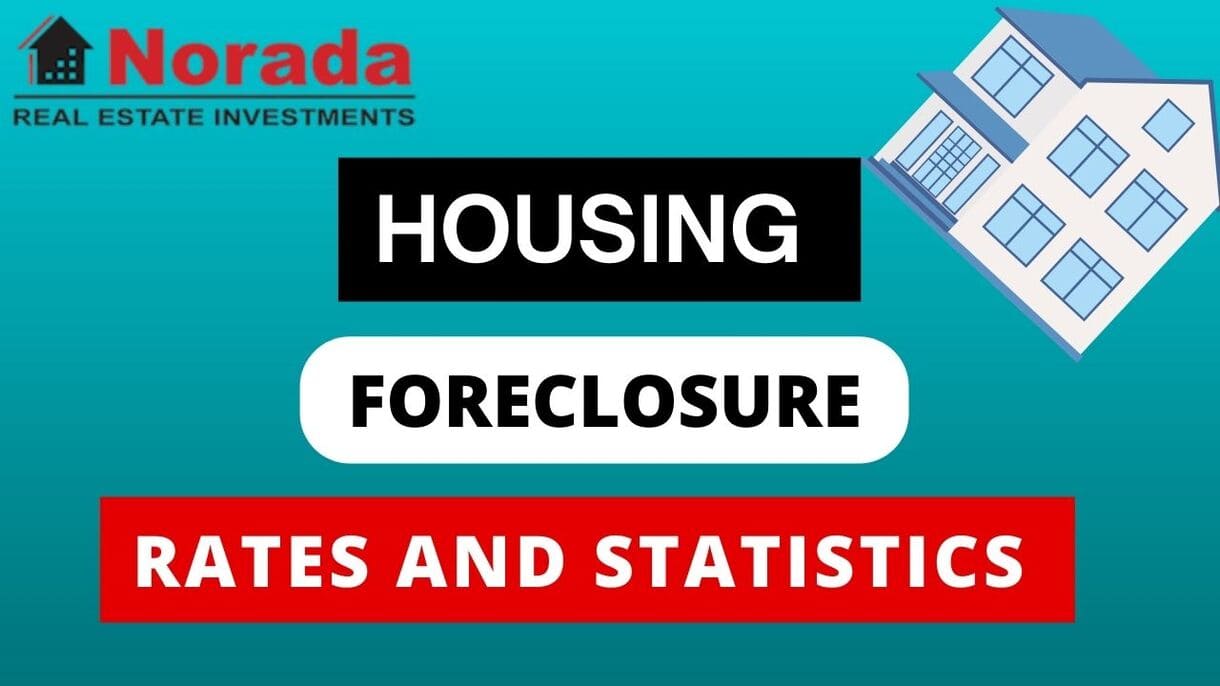Worried about where the housing market might tank next? You’re in the right spot. The numbers don’t lie – home values in the United States are forecast to dip 1.4% nationwide, and some cities? They’re staring down steeper drops. While the national average shows a modest cooling, these 20 regions are flashing red flags. We dug into the latest forecasts to spotlight the 20 riskiest or worst housing markets where prices could tumble or crash between now and May 2026.
20 Worst Housing Markets Bracing for the Biggest Price Crash or Correction by 2026 🏠💸
📉 What’s Going Down (and Why) Between Now and 2026
Before we jump into the list, let's talk about why some housing markets might be heading for a correction. Several factors are at play:
- Rising Inventory: More homes on the market mean buyers have more choices, giving them leverage to negotiate lower prices. I’ve seen this firsthand in my own neighborhood – when several similar homes hit the market, prices softened quickly.
- Elevated Mortgage Rates: High mortgage rates in 2025 are primarily driven by the Federal Reserve's efforts to combat inflation, which has led to higher borrowing costs across the board, alongside factors like ongoing economic uncertainty influenced by potential trade measures and government spending, and strong demand in the housing market coupled with limited supply. Higher rates make buying a home more expensive, sidelining some potential buyers. This reduced demand can lead to price drops, especially in areas where affordability is already stretched thin.
- Labor Market Concerns: Economic uncertainty and potential job losses can make people hesitant to make big purchases like homes. Factors like trade policy changes, reciprocal tariffs, fluctuating interest rates, and evolving immigration policies are creating uncertainty for businesses, potentially impacting hiring and investment decisions
- Rental Market Shifts: New construction is impacting the rental market, driving up vacancy rates and slowing rent growth. This can indirectly affect the housing market, as some potential buyers may opt to rent for longer.
Understanding the Data
The following analysis is based on Zillow's projections and focuses on Metropolitan Statistical Areas (MSAs). These are regions consisting of at least one urbanized area with a population of 50,000 or more, plus adjacent counties that have a high degree of social and economic integration with the core.
Here's a breakdown of the data used in this analysis:
- Market: The specific Metropolitan Statistical Area (MSA).
- Area Type: Metropolitan Statistical Area.
- State: The state where the MSA is located.
- Base Date: Represents the starting month for price level change.
- Price Change Projection as of June 30, 2025: Projected price change.
- Price Change Projection as of August 31, 2025: Projected price change.
- Price Change Projection as of May 31, 2026: Projected price change.
Now, let's dive into the list. Remember, these are projections, and things can change. However, these areas are currently identified as being at higher risk of price declines.
Here is the list of the 20 Worst Housing Markets on the Verge of a Big Price Decline in one year from now:
The 20 Housing Markets Facing the Biggest Price Declines
Price projections from May 2025 to May 2026
| Rank | Market | State | Jun 30, 2025 | Aug 31, 2025 | May 31, 2026 |
|---|---|---|---|---|---|
| 1 | Greenville, MS | MS | -2.6% | -5.5% | -15.0% |
| 2 | Pecos, TX | TX | -1.5% | -3.8% | -14.2% |
| 3 | Clarksdale, MS | MS | -3.1% | -7.3% | -13.6% |
| 4 | Cleveland, MS | MS | -2.0% | -5.1% | -13.4% |
| 5 | Bennettsville, SC | SC | -3.0% | -6.0% | -12.9% |
| 6 | Raymondville, TX | TX | -2.1% | -4.9% | -12.1% |
| 7 | Opelousas, LA | LA | -1.9% | -4.6% | -11.6% |
| 8 | Morgan City, LA | LA | -2.6% | -5.7% | -10.6% |
| 9 | Big Spring, TX | TX | -0.4% | -2.2% | -10.5% |
| 10 | Natchez, MS | LA | -2.6% | -5.3% | -10.3% |
| 11 | Zapata, TX | TX | -1.8% | -3.5% | -10.3% |
| 12 | Helena, AR | AR | -1.0% | -2.1% | -10.2% |
| 13 | Indianola, MS | MS | -2.6% | -4.9% | -10.1% |
| 14 | Johnstown, PA | PA | -1.6% | -4.5% | -10.0% |
| 15 | Hobbs, NM | NM | -0.5% | -1.7% | -10.0% |
| 16 | Alice, TX | TX | -0.5% | -2.0% | -9.6% |
| 17 | Beeville, TX | TX | -1.3% | -3.2% | -9.6% |
| 18 | DeRidder, LA | LA | -0.6% | -2.0% | -9.5% |
| 19 | Houma, LA | LA | -0.9% | -2.7% | -9.4% |
| 20 | Bogalusa, LA | LA | -1.5% | -3.6% | -9.4% |
A Closer Look at Some of These Markets
Let's take a moment to examine some of these markets more closely and understand some of the factors that might be contributing to the projected declines.
- Greenville, MS: Located in the Mississippi Delta, Greenville's economy has historically been tied to agriculture. Declining agricultural opportunities and population shifts could be contributing to housing market weakness.
- Pecos, TX: Pecos has seen significant growth due to the oil and gas industry. However, fluctuations in energy prices can lead to booms and busts, impacting housing demand. A sustained downturn in the energy sector could explain the projected decline.
- Clarksdale, MS: Famous for its blues music heritage, Clarksdale faces economic challenges similar to other parts of the Mississippi Delta. Limited job opportunities and population loss are likely factors.
- Johnstown, PA: Once a major steel production center, Johnstown has struggled with economic diversification. The decline of the steel industry has had a lasting impact on the area's economic prospects and housing market.
Why Are These Markets Particularly Vulnerable?
Several factors might make these markets more susceptible to housing price declines:
- Economic Dependence on a Single Industry: Many of these areas rely heavily on one or two industries (like agriculture, oil and gas, or manufacturing). If those industries suffer, the entire local economy can take a hit.
- Population Decline: Some of these areas have been losing population for years. Fewer residents mean less demand for housing.
- Limited Job Opportunities: Lack of diverse job opportunities can make it difficult to attract and retain residents, impacting the housing market.
- Affordability Issues: While prices might be lower compared to national averages, affordability can still be a problem for many residents in these areas, especially if wages are stagnant.
What Does This Mean for Buyers and Sellers?
If you're thinking of buying or selling in one of these markets, here's what you should keep in mind:
- For Sellers: Be realistic about pricing. Overpricing your home could mean it sits on the market for longer, and you might eventually have to lower the price anyway. Consider making improvements to make your home more attractive to buyers.
- For Buyers: You might have more negotiating power. Take your time, do your research, and don't be afraid to make a lower offer. However, be mindful of the risks involved in buying in a declining market.
National Trends in Home Values and Sales
Even though some markets are expected to decline, it's important to look at the bigger picture. Here's what Zillow projects for the national housing market:
- Home Values: A nationwide decline of 1.4% is projected. However, this varies significantly by region.
- Existing Home Sales: The projection is around 4.14 million sales, a 1.9% increase from 2024. Increased inventory is expected to drive sales.
The Rental Market Outlook
The rental market is also seeing some changes:
- Single-Family Rents: Expected to rise by 2.8% in 2025.
- Multi-Family Rents: Expected to increase by 1.6% in 2025.
These forecasts have been revised downward due to increased construction and higher vacancy rates. This suggests that renters might have more options and less pressure from rising rents in some areas.
Final Thoughts
The housing market is always changing. While these projections offer valuable insights, it's important to remember that they are not guarantees. Economic conditions, local developments, and other unforeseen events can all impact housing prices.
If you're considering making a move, do your homework, consult with real estate professionals, and make informed decisions based on your individual circumstances.
Invest in Real Estate in the Booming Markets of the U.S.
Discover high-quality, ready-to-rent properties designed to deliver consistent returns.
Contact us today to expand your real estate portfolio with confidence.
Contact our investment counselors (No Obligation):
(800) 611-3060
Recommended Read:
- 10 Housing Markets Predicted to Boom Amid Economic Uncertainty in 2025
- Top 10 Housing Markets Seeing Incredible Double-Digit Growth in 2025
- Top 10 Housing Markets Attracting Foreign Homebuyers in 2025
- Top 15 Real Estate Markets to Buy Investment Properties in 2025
- 20 Best Places to Buy a House in the US
- Best Places to Invest in Single-Family Rental Properties
- 5 Best Places to Buy and Sell a House in Spring 2025
- 10 Best States to Buy a House in 2025
- Top 10 Least Expensive Places to Buy a House in 2025
- Top 10 Housing Markets Where Gen Zs Are Buying Homes
- Top 20 Hottest Housing Markets Predicted for 2025
- 10 Hottest Housing Markets Predicted for 2025: Sun Belt Boom
- 5 Hottest Real Estate Markets for Buyers & Investors in 2025





